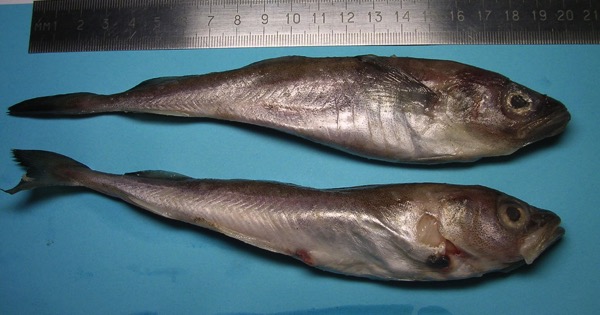Climate Change Is Causing Fish to Shrink
Fishermen over the past several years have noted that fish appear to be shrinking. That observation was validated in 2014 by research that found commercially important fish stocks in the North Sea, such as sole, herring, and haddock, have decreased in maximum body size over a 40-year period.
New research published in the journal Global Change Biology explains that these species and many others are ectotherms, meaning that their body temperature depends on environmental temperature.
As the oceans warm up, their bodies will do so as well. Higher temperature within the scope that the fish can tolerate generally increases the rate of biochemical reactions in the fish’s body and thus increases their body metabolic rate. Metabolic rate refers to an animal’s oxygen consumption, which also naturally increases as fish grow into adulthood because their body mass becomes larger.
One might wonder why fish and other marine ectotherms aren’t just taking in ever more oxygen to coincide with this natural growth due to maturation and the rise of ocean temperatures. They don’t because at a certain point they cannot keep up.
The researchers point out that the surface area of an animal’s gills — where oxygen is obtained — does not grow at the same pace as the rest of its body. This is because gills, in order to work, must function as a two-dimensional surface — width by height — and thus cannot grow as fast as the three-dimensional volume — width by height by depth — they have to supply with oxygen.
The reductions will be in the range of 20–30 percent if ocean temperatures continue to climb due to climate change. At the higher end of that range is one of the world’s most important commercial fish: tuna.
Tunas are active, mobile, and fast-swimming animals that need a lot of oxygen to maintain their lifestyle. They have to keep swimming non-stop in order to get more water through their gills to obtain sufficient oxygen. Thus, when temperature increases, they are particularly susceptible to not having sufficient oxygen to support their body growth.
For a 2 degree Celsius (3.6 degree Fahrenheit) increase in water temperature, which is approximately what is expected to occur in oceans around the world by the mid-21st century, tunas such as the Atlantic bluefin tuna will potentially decrease in body size by 30 percent.

No comments:
Post a Comment